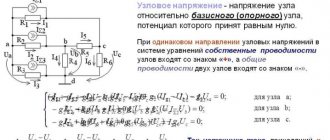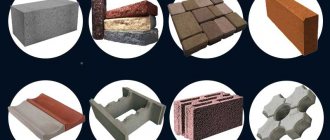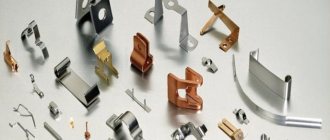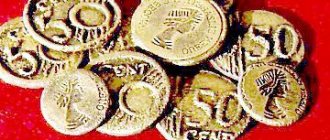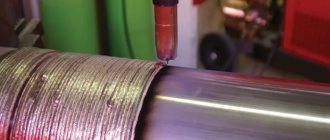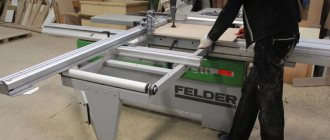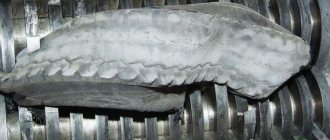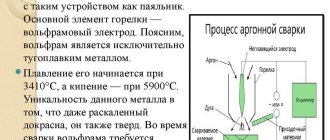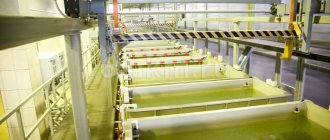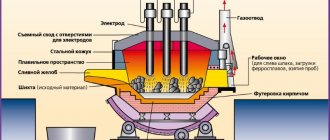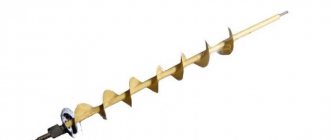About the essence of the operation, the process of execution
Drawing is the name for the process of drawing workpieces through holes that are tapered. In this case, the source material can be anything:
- Aluminum.
- Steel.
- Copper - it also allows the use of tools such as dies for drawing wire.
A drag is a tool that is used to solve a problem. Die is the name of the hole whose configuration determines the shape of the finished profile after processing.
Compared with rolling by a wire drawer, the drawing technique guarantees improved cleanliness and precision on the wire surface. The same applies to pipes, rods and other parts with different dimensions. After such processing, the characteristics of the material change, only for the better. This is due to the fact that the finished parts receive additional reinforcement.
The technology is especially popular in the manufacture of shaped profiles that require high strength. Successfully produced pipes with different diameters, wires with cross-sections ranging from 1-2 microns to 10 millimeters. Larger figures are also possible. The drawing prism helps to achieve an accurate result.
When using modern drawing technologies, high productivity of the equipment is guaranteed. It's also easy with portages. Even high-speed operations do not prevent you from achieving results constantly, without periodic failures. The amount of compression of the source material remains serious. You just need to use the right wire drawing machine.
The drawing process itself consists of several stages, including:
- First, the raw materials are etched in a sulfuric acid solution, the temperature of which is approximately 50 degrees. This operation is performed to extend the service life of the matrices. The effect is achieved by removing scale from workpieces.
- After the first stage, preliminary annealing of the metal surface is carried out. It is performed with the aim of increasing various characteristics of the source material. This ensures a fine-grained structure at the base. In addition, modern methods protect the wire from damage.
- The aggressive solution is neutralized so that etching can be carried out. After preparation, they are washed. Without this, pipe drawing is impossible.
- The ends of the original metal raw material are sharpened using a hammer or forging wolves.
- Direct drawing process.
- Performing annealing. This is where the pipe drawing ends.
The finished wire can be subjected to additional processing operations, including cutting products to the required lengths, straightening, removing ends, and so on. There are no fingerprints on the products.
This is interesting: Types and features of metal turning
General information
The very name of the profession “Wire Drawer” means nothing to many people, and to many more it may even seem funny. When a person first hears this name, the first thing that comes to mind is what are the functional responsibilities of the person performing this work. In fact, drawers are the operators of a drawing machine who process metal under pressure. Using special equipment, they can process wire of one diameter into another. The work involves pulling round and shaped products through a special hole.
There are two types of dragging:
- On chain mills (metal processing machines).
- On drum-type mills with single and multiple drawing.
In the first case, it is used to produce pipes, rods and profiles of limited length. In the second case, to produce long products, for example, wire.
The drawing process produces thin wires with a diameter of up to 0.065 mm, as well as rods and thin-walled pipes of precise size. Rolling produces wire with a diameter of at least 5 mm. Due to the rapid cooling of the metal, the drawing process is used to produce thinner grades. In addition to the direct work process, the specialist’s tasks include determining the quality of the material prepared for production, the incandescent temperature, the number of broaches and the drawing speed. The wire drawer also monitors his workplace, the serviceability of the equipment, and maintains technical documentation (reception and delivery of shifts).
The work process is quite complex, since you have to work with wire of different sizes. It is necessary to calculate the dimensions of the workpieces, configure the cooling system and move the equipment. If we briefly describe the working day of a drawer, it consists of the following stages:
- A person's arrival at the workplace.
- Preparing equipment and inspecting problems.
- Taking over the shift from the previous team.
- Receiving an outfit and directly performing functional duties (before lunch and after lunch).
- Handing over the shift to the arriving brigade.
In accordance with the ETKS, there are 5 categories of drawers. The difference in discharges depends on the type of metal being worked with and the diameter of the wire.
The disadvantages of this profession include:
- Few comfortable working conditions. You have to work with metal and complex equipment.
- Regular maintenance of machines. Equipment often breaks down and has to be adjusted.
- Quite a complex and responsible job. Requires a lot of attention as it is unsafe.
- High requirements for employment. To get this job, you need to get the appropriate education and qualifications.
- Requires executive discipline in order to prevent accidents at hazardous production facilities.
The advantages of the specialty include:
- Variety of work. Every new day is different from the last. Every day the employee receives new tasks.
- Average salary level. Quite noble work for which they pay a price.
- A sedentary type of work, because most of the work consists of supervising the work of the wire drawing mill.
- Manual work with metal requires physical effort, so representatives of this profession have the opportunity to engage in physical education. This work will definitely replace a gym membership.
- Shift work, on schedule without interruption from production.
- You will have to work in a team with a brigade organization of work. In the workshop team, everyone treats each other with understanding and respect. There is always an opportunity to ask someone for advice and help.
Any person who has reached the age of 18 and has received a higher education, or rather graduated from a metallurgical institute with a specialty in metal processing under pressure, can become a wire drawer. Persons who have an education of at least basic general education or secondary general education can undergo training in a profession. A competent teaching staff of a specialized educational institution is able to teach all the intricacies of the profession to anyone.
Dragging courses can be taken at the Stroy Certification and NT Academy Training Center in Moscow, at the training center in Krasnoyarsk, Volgograd, Magnitogorsk and Orel. Vocational training services in the specialty of wire drawing with possible employment are provided by CenterConsult. The work vocation course at None can be conducted at a time convenient for the student.
Features of the procedure
The drawing process is simple. Rolled, cast or pressed billets are used as raw materials. The work is performed on special equipment - drawing machines. The shape, diameter and cross-section of the finished long product depend on the parameters of the die. Compared to metal rolling, this technological operation has many advantages:
- High productivity due to automation of machine processes.
- Wire drawing is aimed at obtaining geometrically correct products with a smooth and clean surface. This reduces the amount of subsequent processing.
- The products have improved mechanical characteristics.
- The ability to produce different types of metal cord, including cored wire, as well as calibrated rods, thin-walled pipes with a diameter of up to 5 mm.
- The diameter of the products varies from 1 to 10 microns.
- Low costs for drawing machines.
Drawing process diagram
Training in: Wire Drawer
Characteristics of the work .
Drawing of copper and aluminum wire on drawing mills. Installing the wire on the carousel, threading its ends, pulling it through dies and securing it to the drums. Participation in setting up mills and changing dies. Securing the ends of the wire. Installation of the die mill and threading the ends of the processed wire into the dies. Monitoring the quality of the emulsion. Measuring wire diameter. Must know: the operating principle of the serviced drawing mills; rules for threading and securing the ends of the wire on the drums; purpose and rules for using the control and measuring instruments and devices used; basic mechanical properties of processed metals; composition of lubricants used when drawing wire from various alloys; basic information about quality and roughness parameters.
About other important features of the procedure
According to experts, the technology has only one significant drawback. This is that the wire deformation rate is too small. This happens due to the limitation caused by the strength of the exit end of the workpiece. Whatever deformation force is applied, this is the result we get. Drawing marks are also different.
The starting material must always be rolled, pressed, or continuously cast. This applies to carbon and alloy steels, non-ferrous metals. Casting will be of high quality only if there is a certain structure at the base. Then you can forget about traces of stains.
Patenting is a technology that has always been used for steel wires in the past. In this procedure, the material was first heated to the austenitizing temperature. And then the exposure was carried out using molten salt or lead. The exposure involved maintaining the temperature at approximately 500 degrees Celsius. This is also different from drawing.
Nowadays, you can do without such complex procedures. When leaving the rental equipment, it has become much easier to ensure the required characteristics. Each machine is equipped with a specialized cooling system. Nowadays, work processes cannot be completed without soap shavings for dry drawing.
